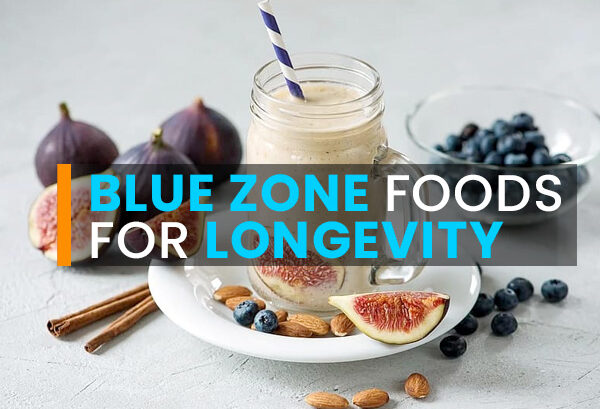Live Longer with Blue Zone Foods
Of all the diet trends available today, one our primary care concierge doctors in Jupiter can highly recommend is the Blue Zone way of eating: fresh, healthy, unprocessed food, from as close to its source as possible, in meals shared with family and friends.
The term “Blue Zone” was coined nearly 20 years ago by journalist and researcher Dan Buettner in a 2005 National Geographic cover story titled, “Secrets of Living Longer.”
His team of anthropologists, demographers, and scientists had traveled the world to find the world’s longest-living people, and to discover the secrets to their longevity.
Buettner’s team found five seemingly disparate places where the people live exceptionally long, healthy lives: on average, around 100. (The term “blue zone” came from the blue circles the researchers drew on a map during their quest.)
The five places are:
Okinawa, Japan
the Nicoyan Peninsula in Costa Rica
the Seventh Day Adventists in Loma Linda, California
Sardinia, Italy
Ikaria, Greece
More than Diet
Of course, healthy eating is key to a healthy body, but the Blue Zone residents had more than good food on their side. Genetics, as always, plays a big role in how long anyone will live no matter where they are.
Other factors the team found the Blue Zones had in common were:
Natural movement: no marathons or gym visits, just long walks, hiking, gardening, etc.
Hara Hachi Bu: an Okinawan term for eating until they’re about 80 percent full
Plant slant: a preference for plant foods over meat
Grapes of Life: one to two servings of red wine daily (except for the Seventh Day Adventists, who eschew alcohol)
Plan de Vida: or “why I wake up in the morning,” i.e., a sense of purpose
Downshift: controlling stress, a sense of serenity
Belong: participation in a spiritual community
Loved ones first: making family a priority
Close tribe: social connectedness
Blue Zone Meals
The Blue Zone diet, which Buettner details in his latest book, “The Blue Zones American Kitchen: 100 Recipes to Live to 100,” is a cornerstone of the Blue Zone program, and closely resembles the Mediterranean diet, but with even less emphasis on fish and meat.
“The five pillars of every longevity diet, including the Blue Zones, are whole grains, vegetables in season, tubers, nuts, and beans. In fact, I argue the cornerstone of a longevity diet is beans,” he told CNN.
Legumes, in fact, are key, he told The Washington Post. They are rich in fiber, which is key to improving cholesterol and blood sugar levels.
“Figure out how to get a cup of beans into your diet every day,” he told the paper. “Just one cup gives you half of all the daily fiber you need.”
What Not to Eat
And even though the Mediterranean diet includes a certain amount of meat and fish, Blue Zone diets contain little, if any.
“People in Blue Zones don’t eat nearly as much fish as the Mediterranean diet prescribes, only three times a week and only three ounces,” he told CNN. “Meat is eaten only five times a month. There’s no cow’s milk in any Blue Zone.”
Instead, people eat goat and sheep’s milk cheeses such as feta and pecorino, he said.
In addition, “no more than three eggs are consumed per week,” he told NBC’s Today show.
“The Blue Zone eating pattern is 98 percent plant-based foods—whole food-based and high carbohydrate,” Buettner told CNN.
“But only complex carbs, not the simple carbs like salty snacks and candy bars and soda pop. You say carbohydrates and people are horrified, but the healthiest foods in our food system are complex carbohydrates,” he added.
Time and Place Count, too
In keeping with the other factors that affect longevity, sharing meals—especially with family—is another component. While our busy schedules might not often permit this, Buettner says it’s worth doing as often as possible.
“Families that eat together tend to each much more nutritiously, they eat slower, and there’s good research that children have fewer issues with disordered eating if they’re eating socially,” he told The Post.
And it turns out the recent trend toward intermittent fasting appears to have some validity. Buettner reports that people in Blue Zones tend to eat earlier in the day.
Okinawans, for instance, traditionally eat a big breakfast and a moderate lunch.
“They don’t even have dinner,” he told the paper.
And the Seventh Day Adventists in Loma Linda would eat a big breakfast at 10 a.m. and a moderate lunch at 4 p.m. “And then they’re done for the day,” he said.
Small Moves
Of course, there’s more to the Blue Zone lifestyle than just food, as we mentioned earlier. Three of the five Blue Zones are isolated, which forces tight social connections and a lot of walking.
“Walking is one of the best forms of exercise and you can do it without thinking about it,” Buettner told Today, suggesting that people think about adopting a dog as a strategy to encourage regular walks.
“We’re all looking for magic dietary pills or serums or supplements, but you see none of that in the Blue Zones,” he said. “It’s mostly small things driven by the right environment,” he said.
That includes social connections.
“We’re genetically hardwired to crave social interaction, and when you don’t have it, there’s a level of subconscious stress that grates away at you,” he added.

